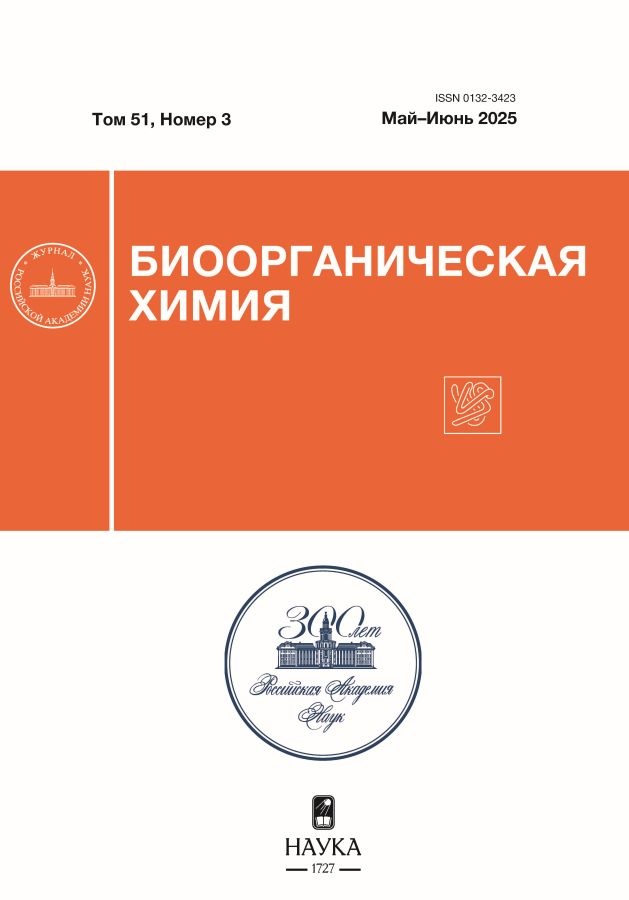Effect of different coatings on immobilization of biomolecules in brush polymer cells
- Autores: Shtylev G.F.1, Shishkin I.Y.1, Miftakhov R.A.1, Polyakov S.A.1, Shershov V.E.1, Kuznetsova V.E.1, Surzhikov S.A.1, Butvilovskaya V.I.1, Barsky V.E.1, Vasiliskov V.A.1, Zasedateleva О.А.1, Chudinov A.V.1
-
Afiliações:
- Engelhardt Institute of Molecular Biology, Russian Academy of Sciences
- Edição: Volume 51, Nº 3 (2025)
- Páginas: 432-443
- Seção: ОБЗОРНАЯ СТАТЬЯ
- URL: https://rjmseer.com/0132-3423/article/view/686916
- DOI: https://doi.org/10.31857/S0132342325030062
- EDN: https://elibrary.ru/KQDHOH
- ID: 686916
Citar
Texto integral
Resumo
Biochips with protein and oligonucleotide probes are used to analyze protein and nucleic acid samples. The key challenges of the technology are the selection of substrate materials and surface functionalization. Polybutylene terephthalate substrates were modified by coating them with photoactive polymers: poly(ethylene-co-propylene-co-5-methylene-2-norbornene), acetylcellulose, polyvinyl acetate and polyvinyl butyral. The coatings were applied by centrifugation and dried. The effect of the coating on the biochip characteristics was investigated. A matrix of hydrophilic cells made of brush polymers with epoxy groups for immobilization of DNA probes and human immunoglobulins was prepared by photoinitiated radical polymerization. The functionality of probes was investigated by hybridization analysis and reaction with specific antibodies. The binding efficiency of probes to molecular targets was evaluated on biochips with different coatings. Cells on substrates coated with polyvinyl butyral and poly(ethylene-co-propylene-co-5-methylene-2-norbornene) showed the best binding efficiency and weak adsorption of targets, providing high contrast fluorescence images after probe binding. Biochips on such substrates are promising for lab-on-a-chip microanalysis technology.
Texto integral
Sobre autores
G. Shtylev
Engelhardt Institute of Molecular Biology, Russian Academy of Sciences
Email: gosha100799@mail.ru
Rússia, ul. Vavilova 32/1, Moscow, 119991 Russia
I. Shishkin
Engelhardt Institute of Molecular Biology, Russian Academy of Sciences
Email: gosha100799@mail.ru
Rússia, ul. Vavilova 32/1, Moscow, 119991 Russia
R. Miftakhov
Engelhardt Institute of Molecular Biology, Russian Academy of Sciences
Email: gosha100799@mail.ru
Rússia, ul. Vavilova 32/1, Moscow, 119991 Russia
S. Polyakov
Engelhardt Institute of Molecular Biology, Russian Academy of Sciences
Email: gosha100799@mail.ru
Rússia, ul. Vavilova 32/1, Moscow, 119991 Russia
V. Shershov
Engelhardt Institute of Molecular Biology, Russian Academy of Sciences
Email: gosha100799@mail.ru
Rússia, ul. Vavilova 32/1, Moscow, 119991 Russia
V. Kuznetsova
Engelhardt Institute of Molecular Biology, Russian Academy of Sciences
Email: gosha100799@mail.ru
ul. Vavilova 32/1, Moscow, 119991 Russia
S. Surzhikov
Engelhardt Institute of Molecular Biology, Russian Academy of Sciences
Email: gosha100799@mail.ru
Rússia, ul. Vavilova 32/1, Moscow, 119991 Russia
V. Butvilovskaya
Engelhardt Institute of Molecular Biology, Russian Academy of Sciences
Email: gosha100799@mail.ru
Rússia, ul. Vavilova 32/1, Moscow, 119991 Russia
V. Barsky
Engelhardt Institute of Molecular Biology, Russian Academy of Sciences
Email: gosha100799@mail.ru
Rússia, ul. Vavilova 32/1, Moscow, 119991 Russia
V. Vasiliskov
Engelhardt Institute of Molecular Biology, Russian Academy of Sciences
Email: gosha100799@mail.ru
Rússia, ul. Vavilova 32/1, Moscow, 119991 Russia
О. Zasedateleva
Engelhardt Institute of Molecular Biology, Russian Academy of Sciences
Email: gosha100799@mail.ru
Rússia, ul. Vavilova 32/1, Moscow, 119991 Russia
A. Chudinov
Engelhardt Institute of Molecular Biology, Russian Academy of Sciences
Autor responsável pela correspondência
Email: gosha100799@mail.ru
Rússia, ul. Vavilova 32/1, Moscow, 119991 Russia
Bibliografia
- Stumpf A., Brandstetter T., Hübner J., Rühe J. // PLoS One. 2019. V. 14. P. e0225525. https://doi.org/10.1371/journal.pone.0225525
- Gryadunov D., Dementieva E., Mikhailovich V., Nasedkina T., Rubina A., Savvateeva E., Fesenko E., Chudinov A., Zimenkov D., Kolchinsky A., Zasedatelev A. // Exp. Rev. Mol. Diagn. 2011. V. 11. P. 839– 853. https://doi.org/10.1586/erm.11.73
- Mateo C., Fernández-Lorente G., Abian O., Fernández-Lafuente R., Guisán J.M. // Biomacromolecules. 2000. V. 1. P. 739–745. https://doi.org/10.1021/bm000071q
- Chi Q., Zhang J., Andersen J.E., Ulstrup J. // J. Phys. Chem. B. 2001. V. 105. P. 4669–4679. https://doi.org/10.1021/jp0105589
- Sullivan T.P., Huck W.T. // Eur. J. Org. Chem. 2002. V. 2003. P. 17–29. https://doi.org/10.1002/1099-0690(200301)2003: 1%3C17::AID-EJOC17%3E3.0.CO;2-H
- Zhi Z.L., Powell A.K., Turnbull J.E. // Anal. Chem. 2006. V. 78. P. 4786–4793. https://doi.org/10.1021/ac060084f
- Yi S.S., Noh J.M., Lee Y.S. // J. Mol. Catal. B Enzym. V. 57. P. 123–129. https://doi.org/10.1016/j.molcatb.2008.08.002
- Singh V., Ahmad S. // Cellulose. 2012. V. 19. P. 1759–1769. https://doi.org/10.1007/s10570-012-9749-6
- Akkoyun A., Bilitewski U. // Biosens. Bioelectron. 2002. V. 17. P. 655–664. https://doi.org/10.1016/s0956-5663(02)00029-5
- Guerrero C., Vera C., Serna N., Illanes A. // Bioresour. Technol. 2017. V. 232. P. 53–63. https://doi.org/10.1016/j.biortech.2017.02.003
- Kobayashi H., Ikada Y. // Biomaterials. 1991. V. 12. P. 747–751. https://doi.org/10.1016/0142-9612(91)90024-5
- Isobe N., Lee D.S., Kwon Y.J., Kimura S., Kuga S., Wada M., Kim U.J. // Cellulose. 2011. V. 18. P. 1251– 1256. https://doi.org/10.1007/s10570-011-9561-8
- Mueller M., Bandl C., Kern W. // Polymers. 2022. V. 14. P. 608. https://doi.org/10.3390/polym14030608
- Zhao B., Brittain W.J. // Progr. Polym. Sci. 2000. V. 25. P. 677–710. https://doi.org/10.1016/S0079-6700(00)00012-5
- Miftakhov R.A., Ikonnikova A.Yu., Vasiliskov V.A., Lapa S.A., Levashova A.I., Kuznetsova V.E., Shershov V.E., Zasedatelev A.S., Nasedkina T.V., Chudinov A.V. // Russ. J. Bioorg. Chem. 2023. V. 49. P. 1143–1150. https://doi.org/10.1134/S1068162023050217
- Shaskolskiy B., Kandinov I., Kravtsov D., Vinokurova A., Gorshkova S., Filippova M., Kubanov A., Solomka V., Deryabin D., Dementieva E., Gryadunov D. // Polymers. 2021. V. 13. P. 3889. https://doi.org/10.3390/polym13223889
- Shtylev G.F., Shishkin I.Yu., Shershov V.E., Kuznetsova V.E., Kachulyak D.A., Butvilovskaya V.I., Levashova A.I., Vasiliskov V.A., Zasedateleva O.A., Chudinov A.V. // Russ. J. Bioorg. Chem. 2024. V. 50. P. 2036–2049. https://doi.org/10.1134/S106816202405033
Arquivos suplementares


















